Disclaimer: This article features portfolio companies of Elevar Equity, which is also an investor in The Better India. Editorial integrity and transparency remain our priority, and this piece has been written independently to provide an unbiased view.
To truly comprehend the vast economic potential brimming in India, visit its rural heartlands – like driving through the villages of Hubbali district in Karnataka. As you negotiate the twists and turns of the road, notice how the verdant landscape is punctuated with shops, now and then. A closer look will reveal barcodes displayed in plain sight.
This is a new addition, as shop owner Ishwargowda Basavanagowda Patil explains.
Monday mornings are a busy time for him and the kirana (general store) that he runs. But Ishwargowda seems unfazed by the slew of orders. He’s no longer required to ace mental math while attempting to calculate the amount of change that needs to be returned to a customer. UPI (Unified Payments Interface) has his back.
It is fascinating to watch the rhythmic order of business — with transactions happening in seconds.
This is the picture of a new age India.
“It [UPI] makes things hassle-free,” Ishwargowda points out. However, building a successful business requires a lot more than integrating tech into transactions, he emphasises. “We need loans too.” This is where SarvaGram — one of India’s first rural lending startups comes into play. A month ago, an opportunity knocked on Ishwargowda’s door in the form of a visit from one of SarvaGram’s staff, offering him a loan that would essentially take the business to new heights, by helping Ishwargowda purchase more stocks.
Cynical at first, he decided to “take a chance”. And the results are reflected in his earnings today. “My income from the shop is between Rs 2,000 to Rs 3,000 per day,” he smiles. That isn’t all. “The loan lets me grow my business, keep more stocks in my shop, and sell more things,” he notes, adding that as one of the only kirana shops in the Amargol area, the demand is always burgeoning and the loan is helping him meet it.
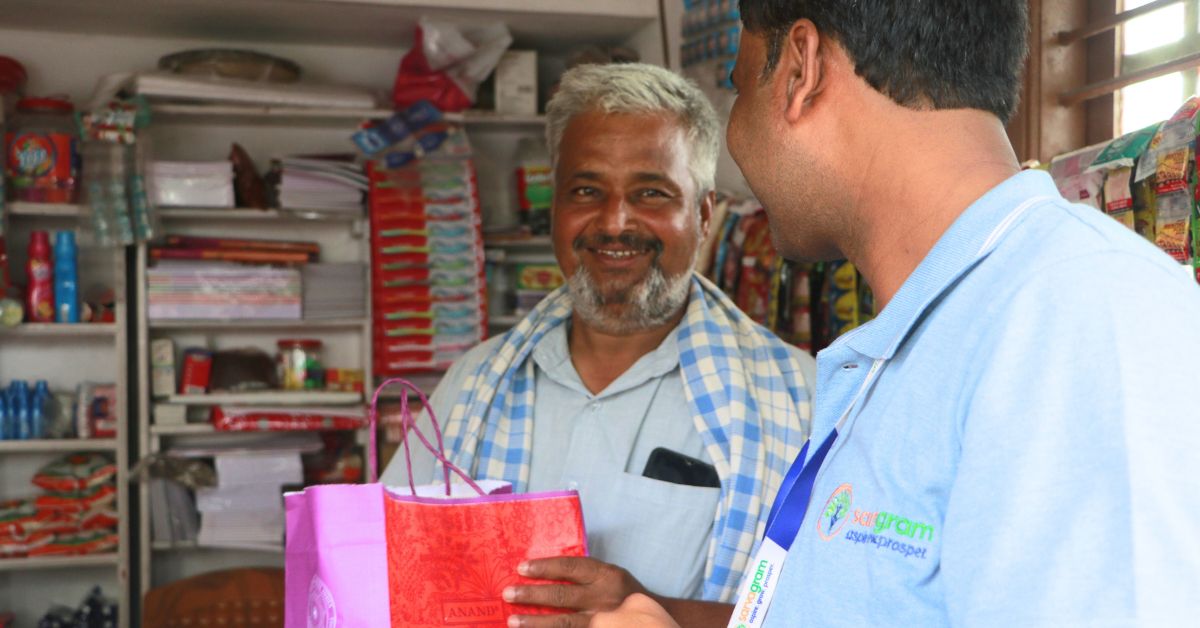
Stories like Ishwargowda’s provide validation to former banker and SarvaGram co-founder, Utpal Isser. He explains how the success of rural households illustrates the immense potential they hold. The inspiration to start a business that focussed on tipping the scales in favour of such homes, struck Utpal while leading the rural and inclusive banking division at one of India’s largest private sector banks.
The role provided him a front-row seat to the transformation that India’s rural ecosystem was undergoing, while also highlighting the unfairness of formal banking institutions and systems that weren’t conducive to their needs.
“Watching this upward mobility and shift in infrastructure (both public and digital) motivated us to look for a business model that would take care of the realities of these [rural] markets. We intended to target underbanked but creditworthy homes,” Utpal notes. Together with Sameer Mishra, he founded SarvaGram, which has changed many lives like Ishwargowda’s, with access to credit.
“It [SarvaGram] isn’t an overnight dream, but instead, a continuing success story,” Utpal points out.
Giving rural households agency
If Ishwargowda’s creditworthiness were to be assessed solely based on his income at the time, or his discretionary expenses, he wouldn’t have made the cut. A lack of steady income was why he wasn’t considered for a formal bank loan. To this end, when Utpal set out to conceive SarvaGram, he was keen to build it with a growth-oriented ethos that would provide loans to those with variable incomes, but aspirational mindsets.
Today, as “India’s first household-centric, data-led, ‘high-tech high-touch’ distribution platform”, SarvaGram is extending a hand towards rural India through its bouquet of financial and productivity-enhancing offerings. The cornerstone of the organisation’s services has been a keen focus on the “underbanked but creditworthy”.
Putting this into perspective, Utpal says, “We decided to focus on mid-income households that may not necessarily have banking records or credit track records to prove their creditworthiness. Instead, their creditworthiness is determined by their ‘intent to repay’. These are not data-dark households anymore.”
The impact ripples of SarvaGram are currently reaching over 16,000 villages across India, making it the gold standard in how tech can be leveraged to scale the dreams of households that once did not come under the purview of formal banking.
While Ishwargowda is reaping the benefits of his association with SarvaGram at his kirana, a few kilometres away, farmer Hanumanthappa Lingappa’s fate mirrors the same success. It will be a decade now since the farmer has been cultivating sugarcane. The land is cropping well — as suggested by the sweet drink that the farmer offers us.
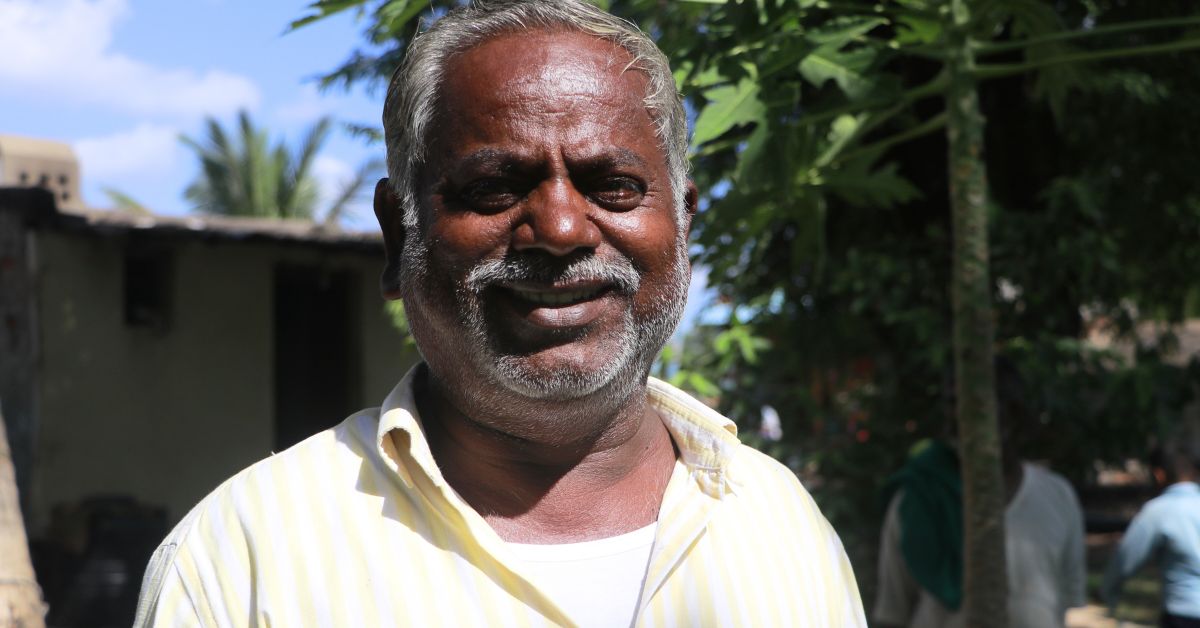
A quick tour through Hanumanthappa’s home and the fields that extend for miles beyond the backdoor is a nod to his thriving business(es); note the use of plural! You see, Hanumanthappa is championing two endeavours, simultaneously.
As he explains, sugarcane farming, though lucrative, isn’t dependable — fluctuating seasons and variable soil patterns play spoilsport — and so he conceived another business which entails him collecting grains from the neighbouring farmers and selling them to a Farmer Producer Organisation (FPO).
When the 57-year-old applied for a loan through SarvaGram for the same, he was prepared to wait. He wasn’t a stranger to the harrowing experiences that farmers had to endure to get access to credit. So, you can imagine his surprise when in 20 days, the loan was disbursed and his business was ready to take off. “I’ve told many others to take advantage of the scheme,” he beams, adding that so far, his earnings have increased by Rs 10 lakh.
Hinged on social and trade capital
For farmers like Hanumanthappa, FPOs are akin to catalysts that make revolutions possible. Anil Kumar SG, founder and CEO of Samunnati, agrees. Years ago, Anil and Pravesh Sharma IAS (retired), Director of Samunnati Agro spotted an opportunity in this sector.
While Pravesh — also known as the ‘Godfather of the FPO’ anchored and championed FPOs in Small Farmers’ Agri-business Consortium, Anil pioneered the financing model of Samunnati, which today works with thousands of FPOs. The duo’s passion for seeing India’s rural hinterland scale its operations translated into Samunnati’s mission. Today, the organisation has access to over 6,500 FPOs and is approaching the 10,000 FPO mark.

While the drive through Hubbali’s beautiful landscapes makes one privy to the mandis (markets) and beautiful village homes, there are very few banks in sight. Pravesh explains the reason, “In the parlance of the financial world, banks have not seen this sector as an attractive asset class.”
This is where Samunnati enters. “The organisation’s genius has been to show that this asset class can be a rewarding one, provided it is structured correctly,” Pravesh adds.
At Samunnati, the focus is on smallholder farmers as the main beneficiaries; a paradigm shift in the existing economic view and opinions. But it was vital that the organisation be designed on this crux for Anil, whose two-decade-long association with the banking sector introduced him to the woes of agri-enterprises that lacked access to credit and loans.
By providing smallholder farmers and agri enterprises access to markets, financial intermediation, market linkages and advisory services, Samunnati enables them to operate at a higher equilibrium.
It is a standing example of how entrepreneurship can be targeted at providing commercially viable solutions to a customer segment, which is often misunderstood, and sidelined.
While operational results are a nod to their incredible work, Anil maintains that the organisation has a larger goal — to set an example. “Through Samunnati, we have established that lending to farmers is credible, sustainable and scalable. Samunnati has demonstrated the scalability of lending to agriculture, and this will foster a lot of banks coming into the sector. As I see it, the flow of credit to the agricultural sector is poised to take a big leap.”
Farmer Mrutunjay Shankar Salimate, leader of Kalmeshwara FPO, which has benefitted from its association with Samunnati, reminisces how in 2016 when they started, they were just a group of 50 farmers. “Now we have more than 1,400 farmers,” he says. The association with Samunnati has been a shot in the arm for the FPO’s work of supporting farmers with seeds, fertilisers, spray pumps, supply chain operations, etc.
Mrutunjay adds, “They have provided us with market linkages, networking with institutions and financial support. They have also conducted activities to identify village-level entrepreneurs.”
SarvaGram and Samunnati’s success stories are reflective of how entrepreneurs can create businesses that address the growing aspirations of millions of Entrepreneurial HouseholdsTM across India, to address the EPIC Opportunity.
The EPIC Opportunity is a description of the multi-trillion dollar market opportunity that Entrepreneurial Households represent. For investors, it provides an opportunity to deploy capital for the creation of large, formal institutions addressing the demands of Entrepreneurial Households, across emerging markets. This burgeoning asset class is fast proving to be the new centre of gravity of the country’s and the world’s economic prosperity. By tapping into the potential of these households, companies like SarvaGram and Samunnati are leading the way and showcasing that impact and commercial returns can go hand-in-hand.
India’s growth story is set to take on a new narrative. Proof of this lies in my conversation with farmer Mrutunjay. While a wide array of opportunities are open to his children, he says, they are keen on following in his footsteps. “They want to grow up to be farmers.”
Leading change from the front
The landscape in remote areas of India does seem promising. And the feeling continues 402 km away, in Bengaluru. Dreams are brimming at the Nisarga Vidyanikethana High School, as hundreds of kids who study at the school share their aspirations.
“I want to get into sports,” says a 10-year-old. While another says he will join the Army. Hearing these innocent dreams has school head Nandan Eshwar beaming. Since its inception, the school has served as a space for budding talent. Nandan, whose uncle Channakeshava built the school, has always admired the students’ persistence to learn and dream big. His uncle, he says, would be thrilled.
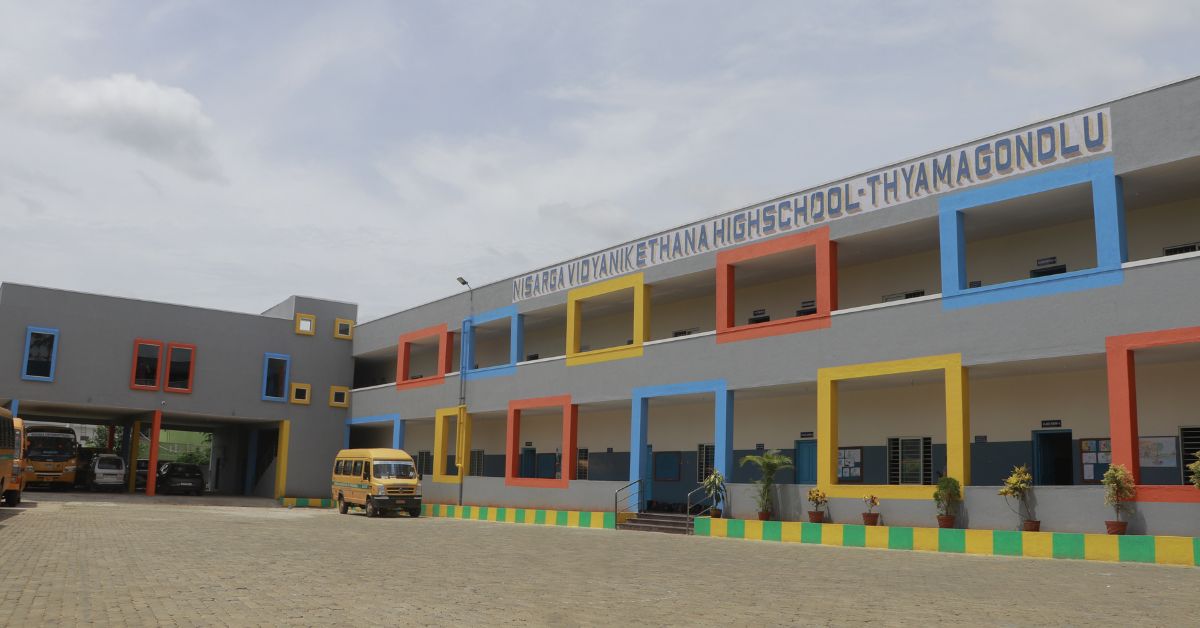
“He [my uncle] was very passionate about giving back to the community. After his passing, my parents took over the running of the school,” Nandan notes. After pursuing his master’s in engineering abroad, a love for giving back to society tugged Nandan back to the place he called home. And, since the pandemic, he has been at the helm of affairs at the school, bringing with him lots of ideas for transforming the education system in the school.
“I wanted to improvise the school curriculum in accordance with what I had seen abroad,” he shares. Partnering with LEAD Group — an integrated school edtech solution that is leveraging the power of curriculum, technology and data to improve the school’s performance — was a culmination of this dream.
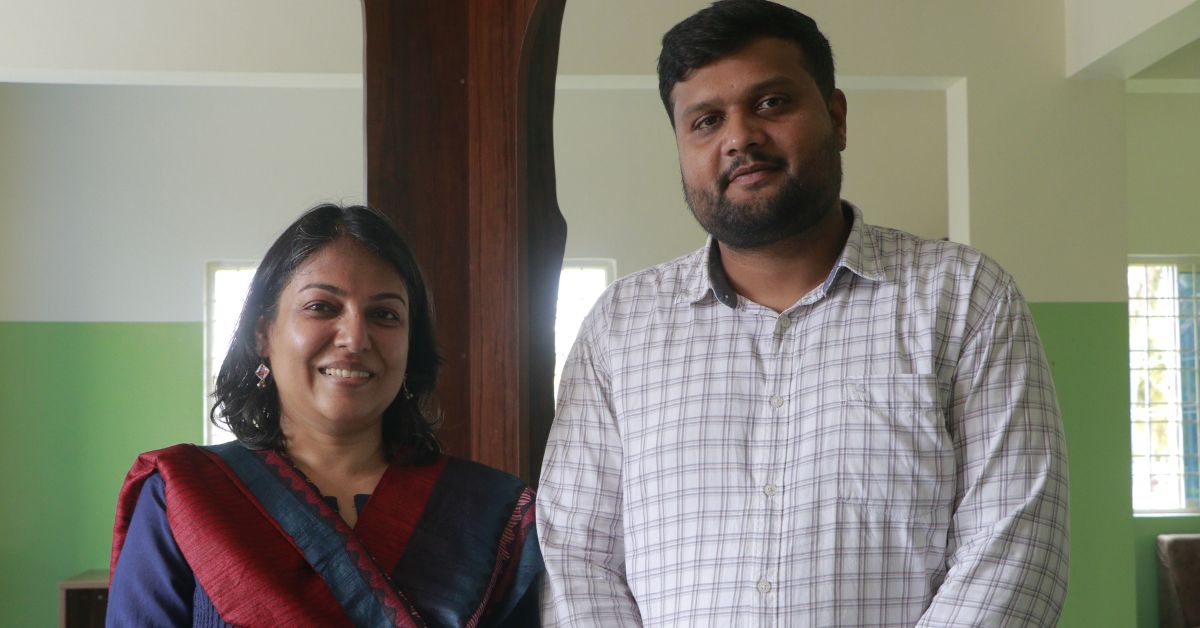
Monday morning blues are forgotten in teacher Divya’s English class 5A. Enthusiasm colours the faces of her students as they vie to answer every question she poses. Suddenly, from teaching on the blackboard, she switches on the Smart TV in the room to help the children better understand the topic of phonics. And in that moment, magic happens.
The class comes alive; hands are raised higher at every question; the exuberance is telling, both, on the kids’ faces and in their responses. This new approach to education is set to drive India’s next economic wave, affirm duo Sumeet Mehta and Smita Deorah, co-founders of LEAD Group.
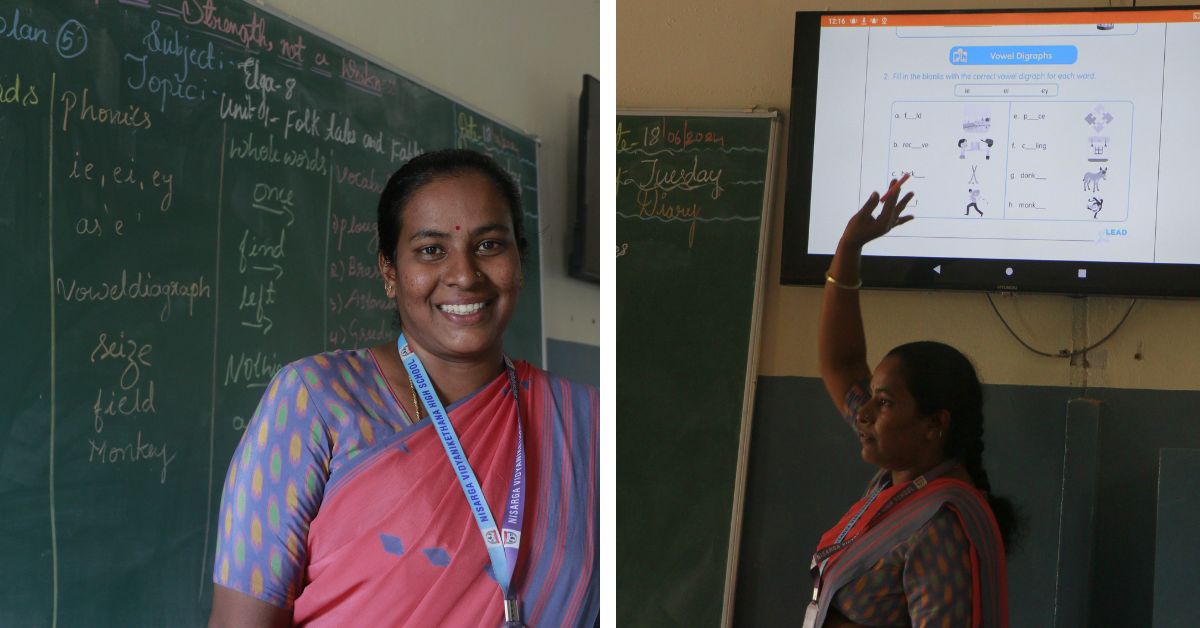
Through smart TVs in classrooms, digital tablets with pre-loaded lesson plans and tools for teachers, and school excellence kits that couple audio-visual learning with a kinesthetic approach, the duo is certain that learning is set to touch new horizons. Head Nandan testifies to this. “A smart and interactive learning environment is created for the children,” he says.
Are they loving it?
“Yes!” smiles Tanushree, a primary student. Today, she is particularly thrilled as her favourite fable ‘Magic Pot’ got a whole new meaning through the audio-visual content. “I can see everything that is in my textbook and also watch it happening! I love learning phonics, too,” she adds.
When Sumeet and Smita set out to transform the educational landscape in India with an ambition to reshape classroom dynamics, their focus lay on tier two, three, and four towns. And this calculated decision has been rewarding. Today, LEAD Group is present in over 8,000 schools, and the duo shares that each of these schools has witnessed palpable changes once they have embraced technology-driven multimodal education.
One of the biggest rewards has been improved student mastery across all subjects – students become fluent in English, and do better in Math and Science. Drawing from this, Smita shares the model that has worked in their favour; one that involves all stakeholders — principals, teachers, parents, and students; thereby embedding sustainable change within the school’s ecosystem.
The numbers are telling. But the real validation lies in heartwarming stories that Smita and Sumeet hear every now and then. Letting us in on one such anecdote, Smita says, “There was a teacher who once took the LEAD tab in her hand and called it her ‘shikshan mitra’ (teacher’s friend). The reason for calling it this, the teacher went on to explain, was that the device guided her, taught her what to do, and gave her insights about her students. It was everything she needed.”
Breaking barriers and overcoming odds are central to these success stories you’ve just read. As the day wears on, a slight drizzle announces the arrival of dusk. Karnataka gears up for what promises to be a heavy downpour. Shops in the area down their shutters, and Ishwargowda Patil is one of them.
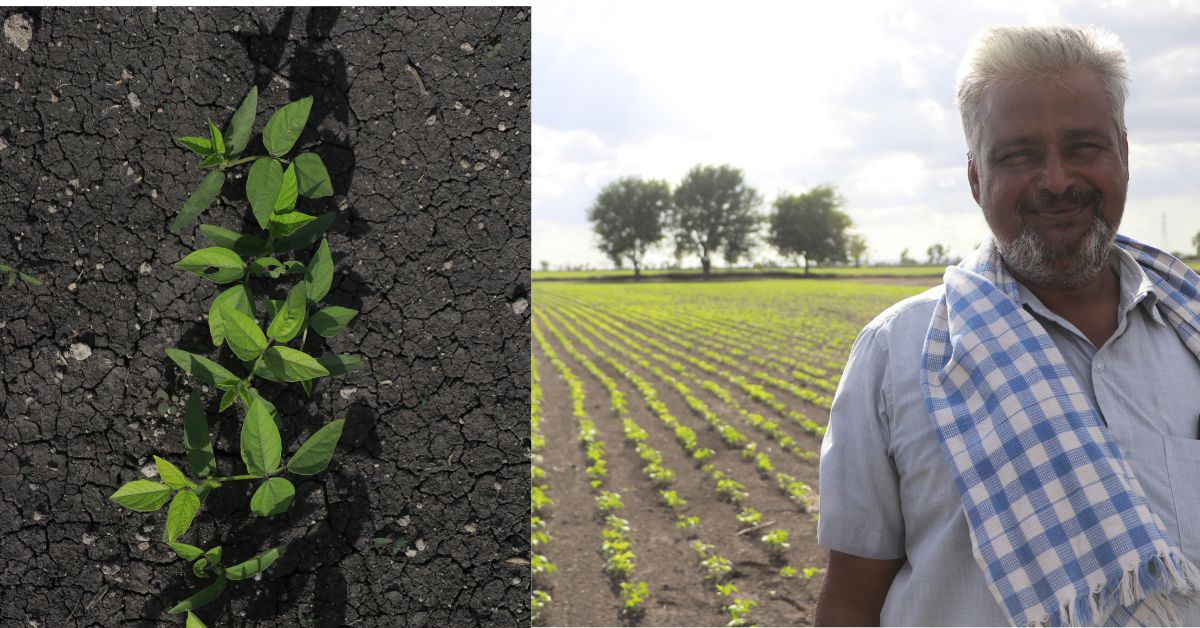
But his day isn’t over yet. He isn’t heading home yet – the vast fields of green gram await him. You see, Ishwargowda may be a businessman. But, he is essentially a farmer at heart. During a walk through his manicured fields, I observe how the land seems parched. But the arrival of the drizzle has him relieved.
Looking around the expanse, I notice how even in the most unfavourable conditions, green shoots have already pushed through the soil and emerged through the coarse rock — a story of resilience, I think to myself. While this is the story in the fields, a similar story of resilience is emerging across India’s towns, as entrepreneurs emerge into successful business owners, undaunted by the odds.
This is the new face of India; one defined by aspirations, opportunities, dreams, and their realisation.
Edited by Pranita Bhat
No comments:
Post a Comment